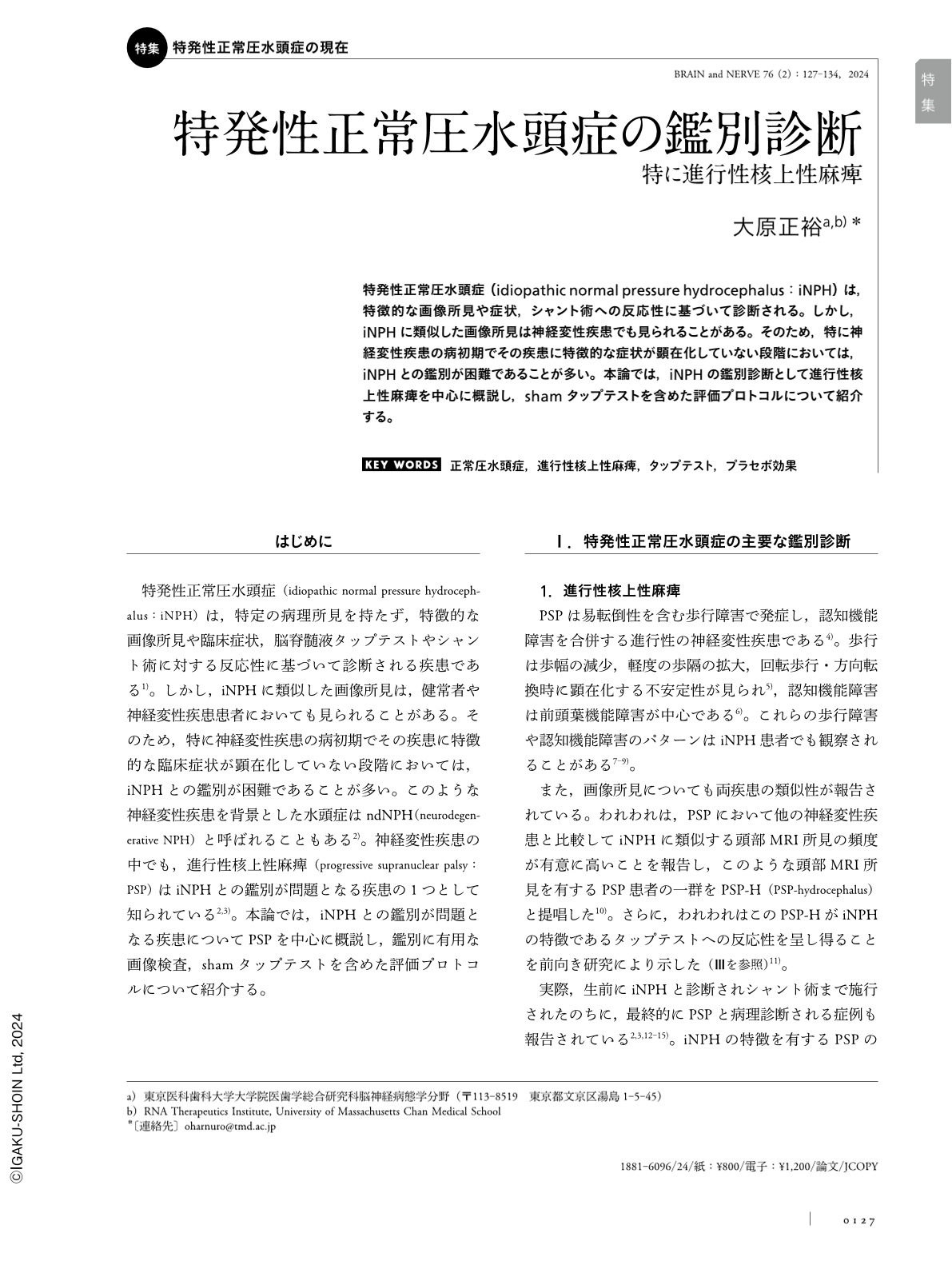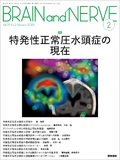Japanese
English
- 有料閲覧
- Abstract 文献概要
- 1ページ目 Look Inside
- 参考文献 Reference
特発性正常圧水頭症(idiopathic normal pressure hydrocephalus:iNPH)は,特徴的な画像所見や症状,シャント術への反応性に基づいて診断される。しかし,iNPHに類似した画像所見は神経変性疾患でも見られることがある。そのため,特に神経変性疾患の病初期でその疾患に特徴的な症状が顕在化していない段階においては,iNPHとの鑑別が困難であることが多い。本論では,iNPHの鑑別診断として進行性核上性麻痺を中心に概説し,shamタップテストを含めた評価プロトコルについて紹介する。
Abstract
Idiopathic normal pressure hydrocephalus (iNPH) is a clinical condition characterized by symptoms of gait disturbance, cognitive dysfunction, and urinary disturbance. In contrast, progressive supranuclear palsy (PSP) is a progressive neurodegenerative disease characterized by supranuclear gaze palsy, akinetic rigidity, gait disturbance, and dementia. PSP manifests various clinical phenotypes that mimic other diseases and occasionally present iNPH-like presentations. Our previous publication showed that PSP develops iNPH-like magnetic resonance imaging (MRI) features more frequently than other neurodegenerative diseases. It is thus sometimes challenging to distinguish iNPH from PSP. Recently, we showed that patients with PSP, particularly those with iNPH-like MRI findings, often demonstrate amelioration of their gait disturbance following a spinal tap or shunt operation. Moreover, our study revealed that both patients with iNPH and PSP often manifest a placebo effect that can be evaluated by implementing a sham spinal tap. Therefore, although a positive response to a spinal tap has been thought of as a distinct feature of iNPH, it may not be useful in differentiating iNPH and PSP. However, in clinical practice, comparing the response to a spinal tap with that of a sham spinal tap may help accurately specify patients with iNPH or PSP who definitively respond to the shunt operation.

Copyright © 2024, Igaku-Shoin Ltd. All rights reserved.


